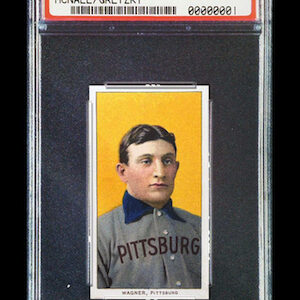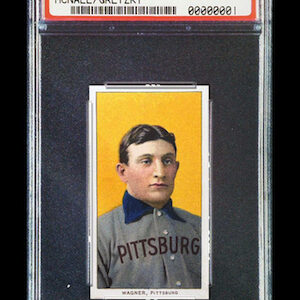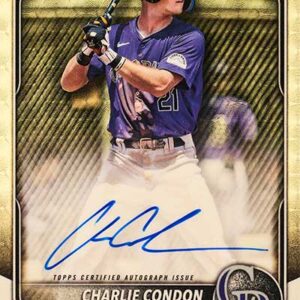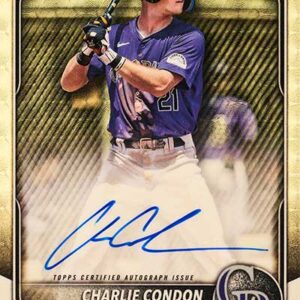The world of baseball collectibles has taken an unexpected sartorial turn in recent years, with prices soaring higher than a fly ball on a brisk autumn evening. But nothing quite sings of opulence and the eccentricity of collecting like a recent trade that jolted the market: a baseball card featuring actual fabric—no, not the kind you can wear but the kind you bid eye-watering numbers for at auctions. One such item has just made history, featuring a now-infamous scrap of Shohei Ohtani’s trousers. Yes, you heard it, trousers.
Not merely a scrap of cloth but a section from a fabric that once graced the legs of Los Angeles Dodgers superstar Shohei Ohtani, the item was sold at a gravity-defying $1.07 million during a heated session at Heritage Auctions. Boots and gloves are too mainstream; why not pants? This hefty price tag isn’t merely attached to the cloth but the narrative it carries with it—the moment when Ohtani carved his name into MLB history as the first player to hit 50 home runs and snag 50 stolen bases in a single season. One could argue that these pants possess a special brand of power, call it “pants power”, if you will.
This card wasn’t merely a swatch of material but a luxury package graced with Ohtani’s autograph, scribbled in gold like royalty signing their imprimatur on a decree, paired with the vibrant MLB logo patch yanked right off those game-defining pants. This amalgamation of signature, fabric, and logo elevates it from a mere collectible to a historic memento fit for baseball’s aristocracy. The identity of the bidder who claimed this connoisseur’s item remains as elusive as the final destination of lost socks, adding another layer of intrigue to the tale.
Interestingly, this sale dwarfed a previous record for Ohtani collectibles, an event that saw a 2018 rookie card parting ways with its owner for a cool half-million dollars. The transaction sets a new benchmark, underscoring the cultural and economic weight Ohtani’s memorabilia carry and flipping the traditional rookie-card-obsession on its head. It appears not only the rookie cards that can headlining auctions, but so can some all-important and history-making trousers.
The Topps Dynasty Black card that captured the market’s attention wasn’t a solo act either. It had relatives—when one wants to etch game-changing moments in lore, why not create more? Two more cards were crafted to memorialize Ohtani’s gilded 50-50 game. One adorned a sliver of his widely-publicized slacks and intriguingly, some tags from his batting gloves. That piece of memorabilia changed hands for $173,240 during a previous auction. Clearly, preferences in memorabilia acquisition vary, as some connoisseurs placed their bets on gloves over strictly trouser-related items.
Chris Ivy, who spearheads Heritage Auctions’ sports department, delves into the magnetic pull of these unique pieces. “Shohei Ohtani is currently baseball’s biggest rockstar, and this card captures a genuinely historic moment—plus, people really dig that logo patch,” he articulated. But let’s not forget, tradition flirts with revolution; after all, the record-breaking card is not from Ohtani’s rookie era, proving that history and legend are what stamp authority in the collectibles arena.
Over on a parallel track in the same universe, earlier in this very same month, a rookie card of Pirates pitcher Paul Skenes ventured beyond the million-dollar mark, hitting $1.11 million. One can’t help but jest: yes, it’s a rookie card, but where are the pants? Surely if trousers had been part of the paraphernalia, perhaps the stakes could have gone even higher.
As for Ohtani’s spectacular milestone, it wasn’t just a mere statistical feat. Entering LoanDepot Park with 48 home runs and 49 stolen bases already in his backpack, Shohei’s baseball artistry led him to swipe base numbers 50 and 51 with the finesse of a seasoned magician. Then, in the seventh inning, turning his game into legend, he dispatched a lazily-curved ball from Marlins reliever Mike Baumann right into history books, sending it 391 feet into the night sky, sealing his extraordinary baseball chapter. Incidentally, that baseball later sold for $4.39 million, unveiling another layer of the territorially uncharted trend in the megalithic world of auctions.
As this latest revelation in the market rolls out, one can’t help but imagine the potential heirlooms of tomorrow. Could other pieces of personal sporting artifacts, be it shoelaces or the ever-vanishing socks, find themselves glamorously enshrined in collectors’ vaults or be the next targets of an auction frenzy? Only time will tell, but what we can be sure of is that collectors should brace themselves financially—and yes, perhaps even their laundry baskets.





